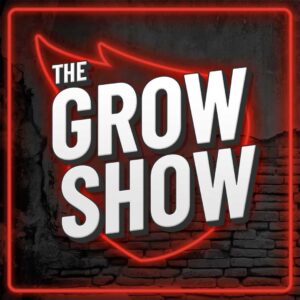In today’s digital-first world, the lines between different business functions are increasingly blurred. One question that often arises among entrepreneurs, marketers, and business leaders is: Is website design a marketing service? At first glance, website design might seem purely technical or creative—focused on aesthetics, user experience, and functionality. However, when viewed through the lens of business growth and customer engagement, website design is undeniably a critical component of marketing strategy.
This article explores the multifaceted relationship between website design and marketing. It delves into how website design influences brand perception, drives customer acquisition, and fuels conversion optimization. By the end, it will be clear why website design is not just a technical task but a powerful marketing service that can make or break a company’s digital success.
Contents
- 1 The Evolving Role of Website Design in Business
- 2 Why Website Design Is Inherently a Marketing Service
- 3 How Website Design Drives Marketing Results: Real-World Examples
- 4 Key Elements of Website Design as a Marketing Service
- 5 Why Businesses Should Treat Website Design as a Marketing Investment
- 6 Conclusion: Website Design Is a Core Marketing Service
- 7 Transform Your Website Into a Lead Generation Engine
The Evolving Role of Website Design in Business
Website design has come a long way from the early days of the internet, when websites were primarily informational brochures. Today, websites are dynamic platforms that serve as the frontline of customer interaction and brand storytelling. This evolution has transformed website design from a purely creative or technical discipline into a strategic marketing function.

From Visual Appeal to Strategic Asset
Initially, website design focused heavily on visual appeal—choosing colors, fonts, and layouts that looked attractive. While aesthetics remain important, modern website design is about much more than just looks. It’s about creating a seamless, engaging experience that guides visitors toward specific business goals, such as making a purchase, signing up for a newsletter, or requesting a consultation.
According to a 2023 report by Adobe, 38% of users will stop engaging with a website if the content or layout is unattractive. This statistic underscores how critical design is to retaining visitors. But beyond retention, website design also shapes user behavior, influences trust, and supports brand messaging—all of which are core marketing objectives. The psychology of color, the strategic placement of elements, and the use of whitespace can significantly affect how users perceive a brand and their likelihood of converting. For instance, a study by HubSpot found that using a single dominant color in a call-to-action button can increase conversions by up to 21%. This illustrates that even subtle design choices can have profound implications for business outcomes.
Integration With Marketing Technologies
Modern websites are integrated with a variety of marketing tools and platforms, including customer relationship management (CRM) systems, email marketing software, analytics, and social media channels. This integration allows marketers to track user behavior, personalize content, and optimize campaigns in real-time.
For example, a well-designed landing page can be A/B tested to determine which layout or call-to-action (CTA) converts better, directly impacting marketing ROI. These capabilities demonstrate how website design functions as an active marketing service rather than a static technical task. Furthermore, the rise of artificial intelligence and machine learning in website design is enabling even more sophisticated personalization. Websites can now adapt in real-time to user preferences, displaying tailored content based on past interactions or demographic data. This level of customization not only enhances the user experience but also fosters a deeper connection between the brand and its audience, ultimately driving loyalty and repeat business.
Why Website Design Is Inherently a Marketing Service
To understand why website design qualifies as a marketing service, it’s essential to examine the core purposes of marketing and how website design fulfills them.
Building and Reinforcing Brand Identity
Marketing is fundamentally about building a brand and communicating its value proposition to the target audience. Website design plays a pivotal role in this process by visually expressing brand personality, tone, and values. Consistent use of brand colors, typography, imagery, and messaging across a website helps create a cohesive brand experience that resonates with visitors.
Research by Stanford University found that 75% of users judge a company’s credibility based on its website design. This statistic highlights how design directly influences brand trust and perception, key marketing outcomes that drive customer loyalty and advocacy. Furthermore, a well-designed website can evoke emotions and create memorable experiences, which are crucial for brand recall. For example, a luxury brand might use high-quality visuals and elegant typography to convey exclusivity, while a tech startup might opt for a sleek, modern design to reflect innovation and forward-thinking.
Driving Customer Engagement and Conversion
Effective marketing aims to engage customers and prompt action. Website design facilitates this by creating intuitive navigation, clear CTAs, and persuasive content layouts that guide users through the buyer journey. UX (user experience) design principles ensure that visitors can easily find information, compare options, and complete transactions without friction.
For instance, a study from the Nielsen Norman Group showed that users often leave websites within 10-20 seconds if they don’t find what they’re looking for quickly. This makes the design of information architecture and user flow a vital marketing tool to reduce bounce rates and increase conversions. Additionally, incorporating interactive elements such as quizzes, polls, or chatbots can significantly enhance user engagement. These features not only keep visitors on the site longer but also provide valuable insights into customer preferences and behaviors, which can be leveraged for more targeted marketing strategies.
Enhancing Search Engine Optimization (SEO)
SEO is a cornerstone of digital marketing, and website design significantly impacts SEO performance. Site speed, mobile responsiveness, structured data, and clean code are all design elements that influence search engine rankings. A website that is slow to load or difficult to navigate will rank lower, reducing organic traffic and marketing effectiveness.
Google’s algorithm updates increasingly prioritize user experience signals, such as Core Web Vitals, which measure loading performance, interactivity, and visual stability. This means that website design directly affects how discoverable a brand is online, making it a critical marketing service. Moreover, integrating SEO best practices into the design phase—such as optimizing images, using proper heading structures, and ensuring mobile compatibility—can significantly enhance a website’s visibility. As search engines evolve, the intersection of design and SEO becomes even more pronounced, emphasizing the need for a holistic approach that considers both aesthetics and functionality in the digital landscape.
How Website Design Drives Marketing Results: Real-World Examples
To illustrate the marketing power of website design, consider these real-world examples where design improvements led to measurable business growth.

Case Study: eCommerce Conversion Optimization
A leading online retailer revamped its product pages by simplifying the layout, enhancing product images, and streamlining the checkout process. The redesign focused on reducing distractions and emphasizing the “Add to Cart” button. As a result, the company saw a 25% increase in conversion rates within three months.
This example demonstrates how website design directly supports marketing goals by optimizing the user journey to maximize sales. Additionally, the retailer implemented A/B testing to further refine their design elements, allowing them to identify which features resonated most with their audience. By continuously iterating on their design based on real user feedback, they not only maintained their conversion growth but also fostered a more loyal customer base that appreciated the seamless shopping experience.
Case Study: B2B Lead Generation
A B2B software provider redesigned its homepage to better communicate its value proposition and included strategically placed CTAs for demo requests and whitepaper downloads. The new design incorporated customer testimonials and trust badges, which enhanced credibility. Following the redesign, the company experienced a 40% increase in qualified leads generated through the website.
Here, website design acted as a marketing service by improving lead capture and nurturing potential clients effectively. Furthermore, the company utilized analytics tools to track user behavior on the site, enabling them to identify which content was most engaging. By tailoring their offerings to meet the specific needs of their audience, they not only increased lead generation but also improved the quality of the leads, resulting in higher conversion rates down the line.
Case Study: Brand Repositioning Through Design
A financial services firm underwent a brand repositioning to appeal to a younger demographic. The website was redesigned with a modern, clean aesthetic, interactive tools, and engaging content formats like videos and infographics. This redesign helped the company increase website traffic by 60% and significantly boost social media engagement, aligning with its marketing objectives.
In addition to the visual overhaul, the firm implemented a content marketing strategy that included blog posts and webinars tailored to the interests of their new target audience. By integrating these elements into the website design, they created a holistic online experience that not only attracted visitors but also kept them engaged. This approach not only solidified their brand identity in the minds of younger consumers but also positioned them as thought leaders in the financial sector, further enhancing their marketing impact.
Key Elements of Website Design as a Marketing Service
Understanding which aspects of website design contribute most to marketing success can help businesses prioritize their efforts and investments.
User Experience (UX) Design
UX design focuses on how users interact with a website. It involves creating intuitive navigation, fast-loading pages, and mobile-friendly layouts. Good UX reduces friction and encourages users to stay longer and explore more, increasing the chances of conversion. Additionally, incorporating user feedback through testing and surveys can provide invaluable insights into pain points and preferences, allowing for continuous improvement. A well-designed user journey not only enhances satisfaction but also fosters loyalty, turning first-time visitors into repeat customers.
Visual Design and Branding
Visual design encompasses the look and feel of the website, including colors, typography, imagery, and overall style. It should align with the brand identity and evoke the desired emotional response from visitors. Consistency in visual design strengthens brand recognition and trust. Moreover, the use of high-quality images and videos can significantly enhance engagement, as they capture attention and convey messages more effectively than text alone. Integrating elements like animations or interactive features can further enrich the user experience, making the site not just a place to find information, but an engaging platform that reflects the brand’s personality.
Content Strategy and Layout
How content is organized and presented on a website affects readability and user engagement. Strategic placement of headlines, CTAs, and multimedia elements can guide visitors through the marketing funnel effectively. Additionally, employing a clear hierarchy in content layout ensures that users can easily digest information, leading to better retention. Incorporating storytelling techniques can also make content more relatable and memorable, encouraging users to connect with the brand on a deeper level. Regularly updating content not only keeps the website fresh but also signals to search engines that the site is active, which can positively impact SEO.
Technical SEO and Performance Optimization
Design choices impact site speed, mobile responsiveness, and crawlability—all factors that influence search engine rankings. Optimizing these technical aspects ensures the website attracts organic traffic and supports broader marketing campaigns. Furthermore, implementing structured data can enhance search visibility by providing search engines with more context about the content, potentially leading to rich snippets in search results. Regular performance audits and updates are crucial to maintaining optimal functionality, as even minor issues can lead to significant drops in user engagement and search rankings. Ensuring that the website is secure, particularly with HTTPS, also builds trust with users and search engines alike, further solidifying its position in a competitive digital landscape.
Why Businesses Should Treat Website Design as a Marketing Investment
Many businesses view website design as a one-time expense or a purely technical project. This mindset overlooks the ongoing marketing value that a well-designed website provides.
Maximizing Return on Marketing Spend
Investing in website design that supports marketing objectives can significantly improve the ROI of other marketing channels. For example, paid advertising campaigns drive traffic to the website, but if the landing pages are poorly designed, conversion rates will suffer. A marketing-aligned website design ensures that traffic converts into leads or sales, amplifying the effectiveness of marketing spend.
Furthermore, a well-structured website can enhance organic search visibility, leading to increased traffic without the ongoing costs associated with paid advertising. Search engines favor sites that are user-friendly, fast, and mobile-responsive, which means that a thoughtful design can lead to higher rankings in search results. This not only reduces the cost per acquisition but also builds a sustainable flow of visitors who are genuinely interested in the products or services offered.
Adapting to Consumer Expectations
Consumers expect seamless, fast, and engaging online experiences. Websites that fail to meet these expectations risk losing customers to competitors. Treating website design as a marketing service means continuously optimizing the site based on user feedback, analytics, and market trends to stay competitive.
Moreover, the rise of mobile browsing has transformed how users interact with websites. A responsive design that caters to various devices is no longer optional; it is a necessity. By prioritizing user experience, businesses can not only meet but exceed consumer expectations, fostering trust and encouraging repeat visits. Incorporating elements such as intuitive navigation, engaging visuals, and quick load times can significantly enhance user satisfaction and retention rates.
Supporting Long-Term Brand Growth
A website is often the first point of contact between a brand and its audience. A strong, marketing-driven design builds brand equity over time by consistently delivering a positive experience and reinforcing brand values. This long-term investment pays dividends in customer loyalty and word-of-mouth referrals.
Additionally, a well-crafted website serves as a central hub for all marketing efforts, from social media campaigns to email marketing. It provides a platform for storytelling and brand messaging that resonates with the target audience. By integrating elements such as blogs, case studies, and customer testimonials, businesses can create a rich content ecosystem that not only informs but also engages visitors, fostering a deeper connection with the brand. This strategic approach to website design not only enhances the user experience but also positions the brand as an authority in its industry, further driving growth and recognition.
Conclusion: Website Design Is a Core Marketing Service
Website design is far more than an aesthetic or technical endeavor—it is a fundamental marketing service that drives brand perception, customer engagement, and business growth. From building credibility to optimizing conversions and supporting SEO, website design intersects with every facet of digital marketing.

Businesses that treat website design as an integral part of their marketing strategy are better positioned to attract, engage, and convert their target audiences. In contrast, those who view it as a standalone task risk undermining their overall marketing effectiveness.
In the competitive digital landscape, the question is not whether website design is a marketing service—it’s how effectively your website design can serve your marketing goals and accelerate your business success.
Transform Your Website Into a Lead Generation Engine
Ready to elevate your business’s online presence and turn your website into a powerful marketing tool? Abstrakt Marketing Group specializes in driving B2B lead generation through strategic website design that aligns with your marketing goals. Let us help you harness the full potential of your digital platform to achieve substantial growth and outperform your competition. Discover how our expertise can lead to your success by clicking Learn More.

Madison Hendrix
Madison has worked in SEO and content writing at Abstrakt for over 5 years and has become a certified lead generation expert through her hours upon hours of research to identify the best possible strategies for companies to grow within our niche industry target audiences. An early adopter of AIO (A.I. Optimization) with many organic search accolades - she brings a unique level of expertise to Abstrakt providing helpful info to all of our core audiences.
- Madison Hendrix#molongui-disabled-link
- Madison Hendrix#molongui-disabled-link
- Madison Hendrix#molongui-disabled-link
- Madison Hendrix#molongui-disabled-link







